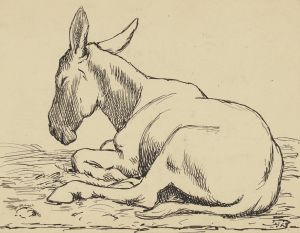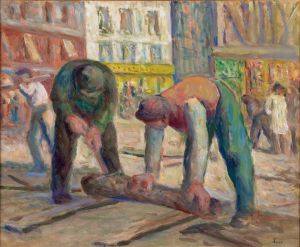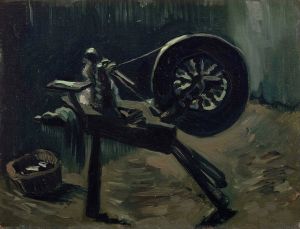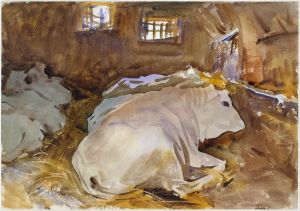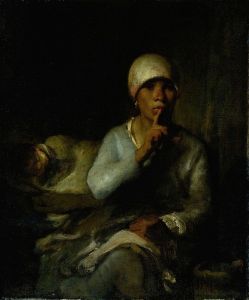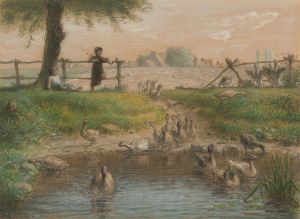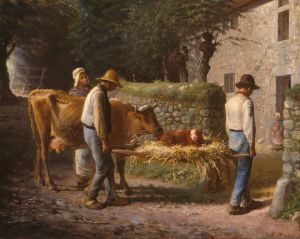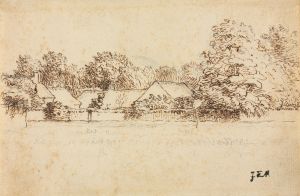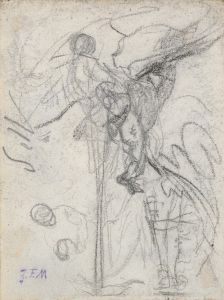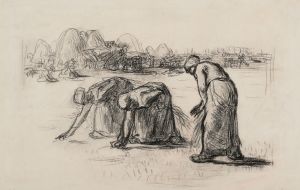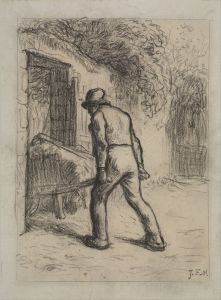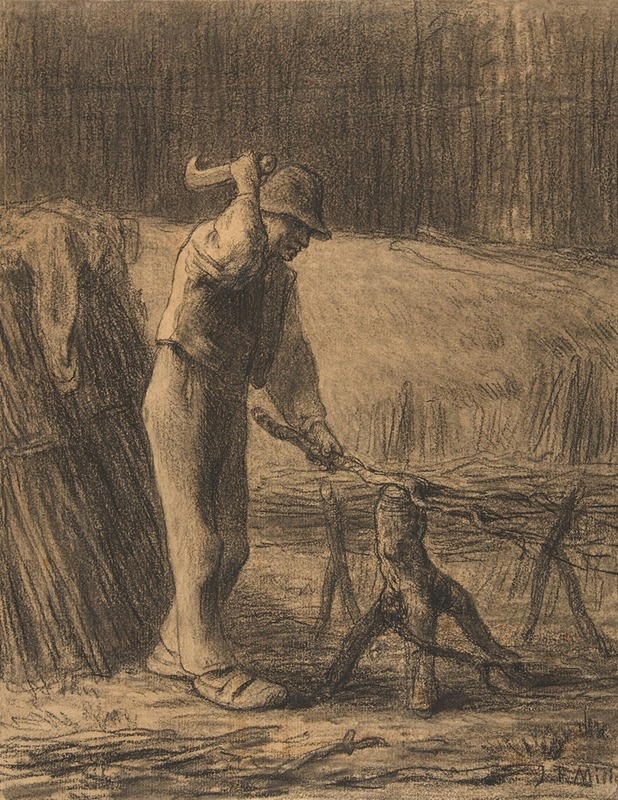
Woodcutter Trimming Faggots
A hand-painted replica of Jean-François Millet’s masterpiece Woodcutter Trimming Faggots, meticulously crafted by professional artists to capture the true essence of the original. Each piece is created with museum-quality canvas and rare mineral pigments, carefully painted by experienced artists with delicate brushstrokes and rich, layered colors to perfectly recreate the texture of the original artwork. Unlike machine-printed reproductions, this hand-painted version brings the painting to life, infused with the artist’s emotions and skill in every stroke. Whether for personal collection or home decoration, it instantly elevates the artistic atmosphere of any space.
Jean-François Millet's "Woodcutter Trimming Faggots" is a notable work by the French artist, who is renowned for his depictions of rural life and the laboring class. Millet, a prominent figure in the Barbizon School, was known for his realistic portrayal of peasant life, often highlighting the dignity and hardship of rural laborers. This painting is consistent with his thematic focus on the everyday lives of the working class.
"Woodcutter Trimming Faggots" illustrates a scene of a woodcutter engaged in the task of trimming faggots, which are bundles of sticks or twigs bound together, typically used as fuel. The painting captures the woodcutter in a moment of concentration and effort, emphasizing the physical nature of his work. Millet's use of earthy tones and attention to detail in the woodcutter's clothing and surroundings reflect his commitment to realism and his interest in the natural environment.
Millet's work often carried a social message, drawing attention to the lives and struggles of the rural poor. In "Woodcutter Trimming Faggots," the artist's focus on a solitary figure engaged in manual labor can be seen as a commentary on the dignity and perseverance of the working class. The painting's composition, with the woodcutter as the central figure, underscores the importance of his labor and the connection between humans and nature.
The Barbizon School, of which Millet was a key member, was a group of painters who worked in the village of Barbizon near the Forest of Fontainebleau in France. They were part of a movement that sought to break away from the formalism of academic art and instead focus on naturalism and the depiction of rural life. Millet's work, including "Woodcutter Trimming Faggots," is characterized by its emphasis on realism and the everyday experiences of ordinary people.
Millet's influence extended beyond his lifetime, impacting later artists who admired his ability to convey emotion and social commentary through his art. His works are often seen as precursors to movements such as Realism and Impressionism, which also sought to depict the world in a more truthful and unidealized manner.
"Woodcutter Trimming Faggots" is an example of Millet's skill in capturing the essence of rural labor and the human condition. The painting's focus on a single, hardworking figure reflects Millet's interest in the individual stories of the rural poor, and his ability to convey their experiences with empathy and respect. Through his art, Millet provided a window into the lives of those who were often overlooked by society, highlighting their contributions and struggles.
Overall, "Woodcutter Trimming Faggots" is a testament to Jean-François Millet's dedication to portraying the realities of rural life and his ability to imbue his subjects with a sense of dignity and importance. The painting remains an important example of 19th-century art that sought to elevate the everyday experiences of ordinary people, and it continues to be appreciated for its artistic and historical significance.





